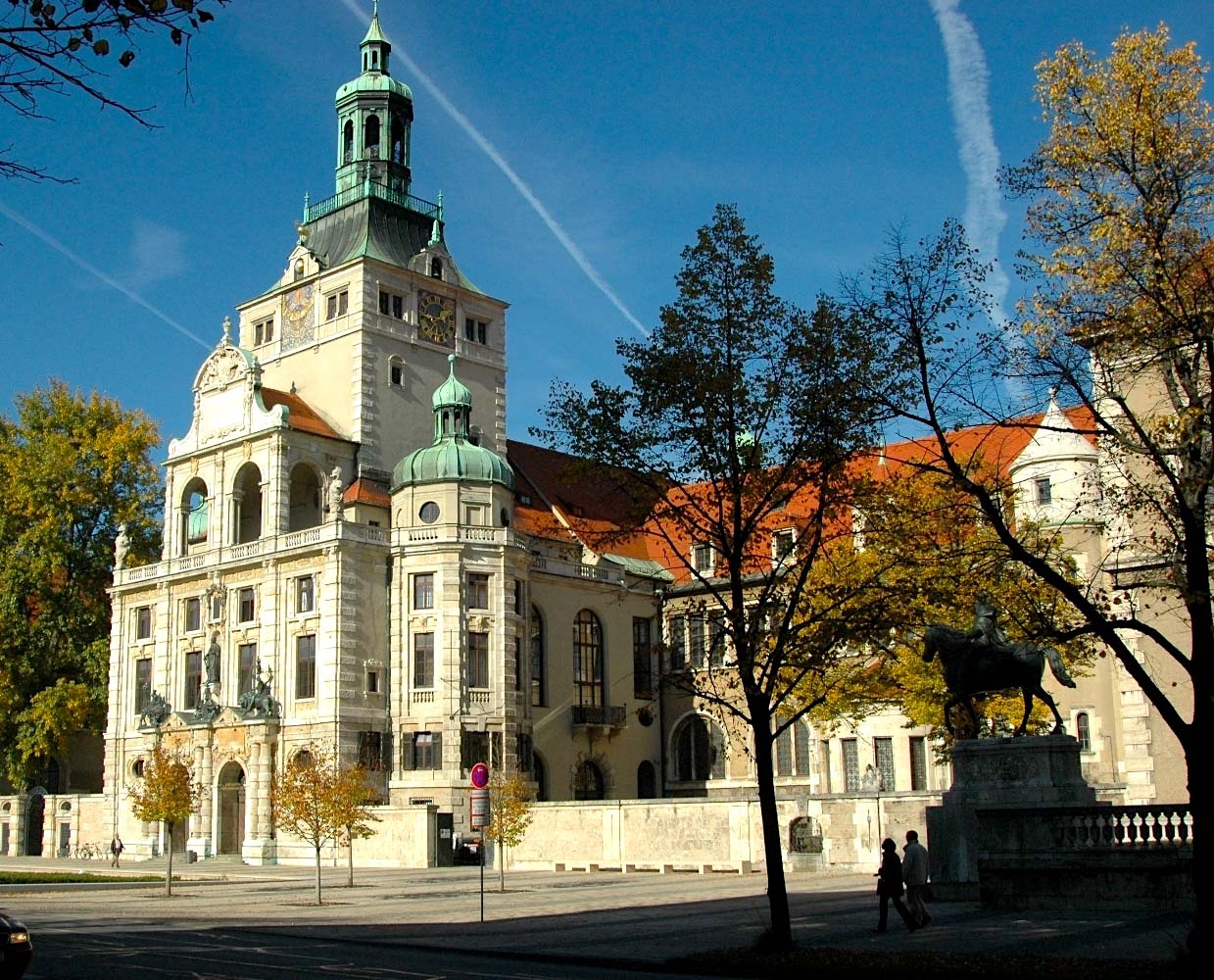
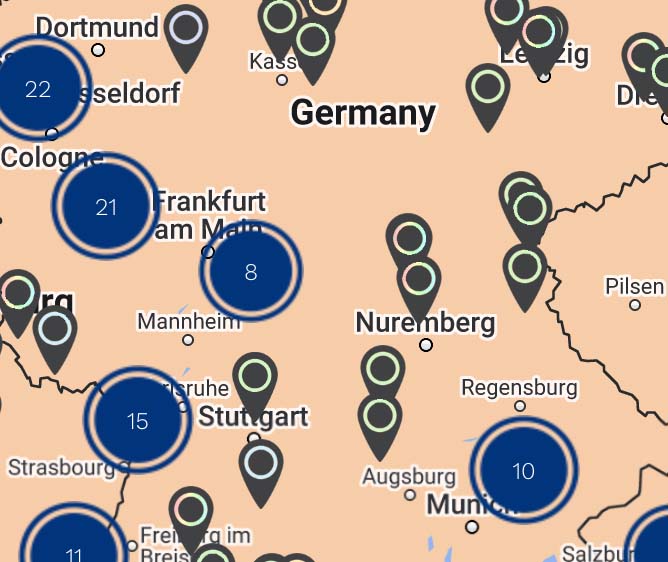
To see all the destinations listed in this guide and other ceramic sites in Germany, check out CERAMIC WORLD DESTINATIONS (CWD), MoCA/NY's interactive map listing over 4,000 ceramic destinations!
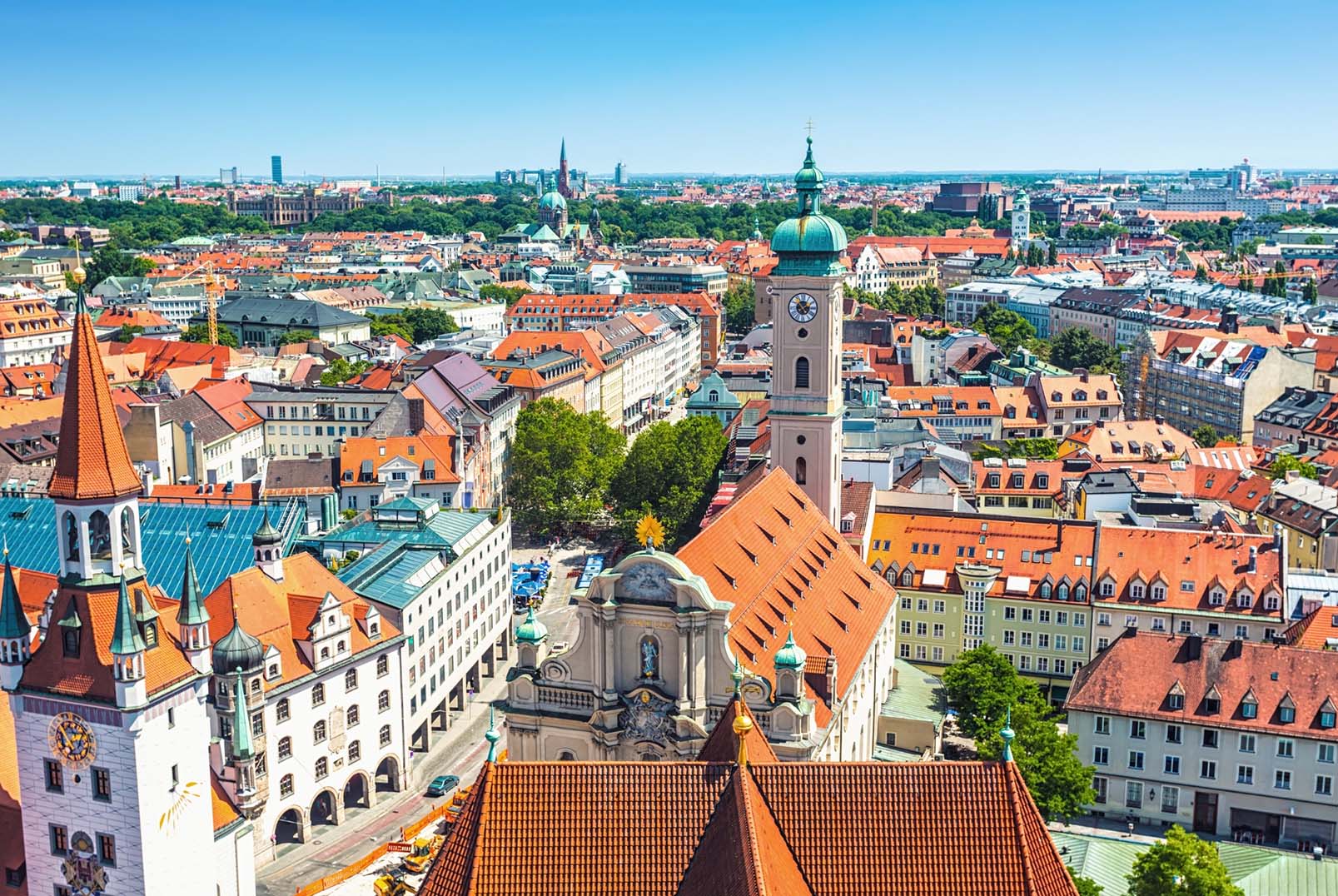
Munich is one of the most beautiful cities in Germany. With 1.5 million inhabitants, it is not particularly large, but it has a lot to offer. Many parks and the Isar River, which flows from the Bavarian Alps, invite you to take a stroll. There are countless beer gardens, cafés, and restaurants—and above all, a wealth of museums. For art and ceramics enthusiasts, Munich offers highlights from every era, from the early days of humankind to today’s award-winning ceramic art. As the capital of the federal state of Bavaria, Munich is located in the south of Germany. On clear days, the spectacular silhouettes of the Alps can be seen on the horizon.
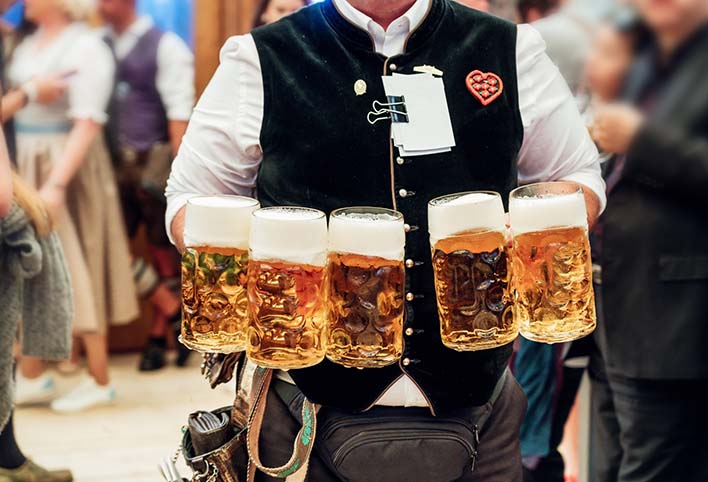
Beer is considered a staple food in Bavaria—some call it “liquid bread.” In reality, beer has been drunk less and less in recent years. As a guest, you should definitely try an Augustiner beer from the oldest still-existing brewery in Munich: the Augustinian monks sold the first beer 700 years ago. The special thing about Augustiner: the brewery does not do any advertising.
If you prefer something without alcohol, try Apfelschorle (apple spritzer), which is apple juice mixed with sparkling water. Particularly refreshing in summer: Rhabarberschorle (rhubarb spritzer).
A typical Bavarian food is Weißwurst mit süßem Senf (white sausage with sweet mustard—don't believe it if someone says it has brains in it!). If you're hungry, you can also have Schweinebraten (roast pork) or Schweinshaxn mit Knödel und Sauerkraut (pork knuckle with dumplings and sauerkraut). If you're slightly hungry, we recommend Obazda with a pretzel (a cheese mixture with Camembert and spices). Also very popular: fresh trout with boiled potatoes. There is also a vegetarian option in almost every restaurant. Typical Bavarian desserts are warm apple strudel with vanilla ice cream or Kaiserschmarrn: torn pancakes with raisins and powdered sugar.
For those looking to stay in the heart of Munich, several excellent hotel options are available. The Platzl Hotel, located on Sparkassenstraße, offers a classic Bavarian experience just steps from Marienplatz and the Hofbräuhaus. Nearby, the Hotel Blauer Bock at Sebastiansplatz occupies a former 16th-century monastery and offers a casual, comfortable stay in the city center, conveniently located near Viktualienmarkt. For a more luxurious stay, the Hotel Bayerischer Hof on Promenadeplatz is a renowned five-star property featuring upscale amenities including Trader Vic’s and the Dachgarten Lounge, offering panoramic views of the city.
DAY 1 | From Royal Porcelain to Radical Modernism: A Museum-Rich Day in Munich
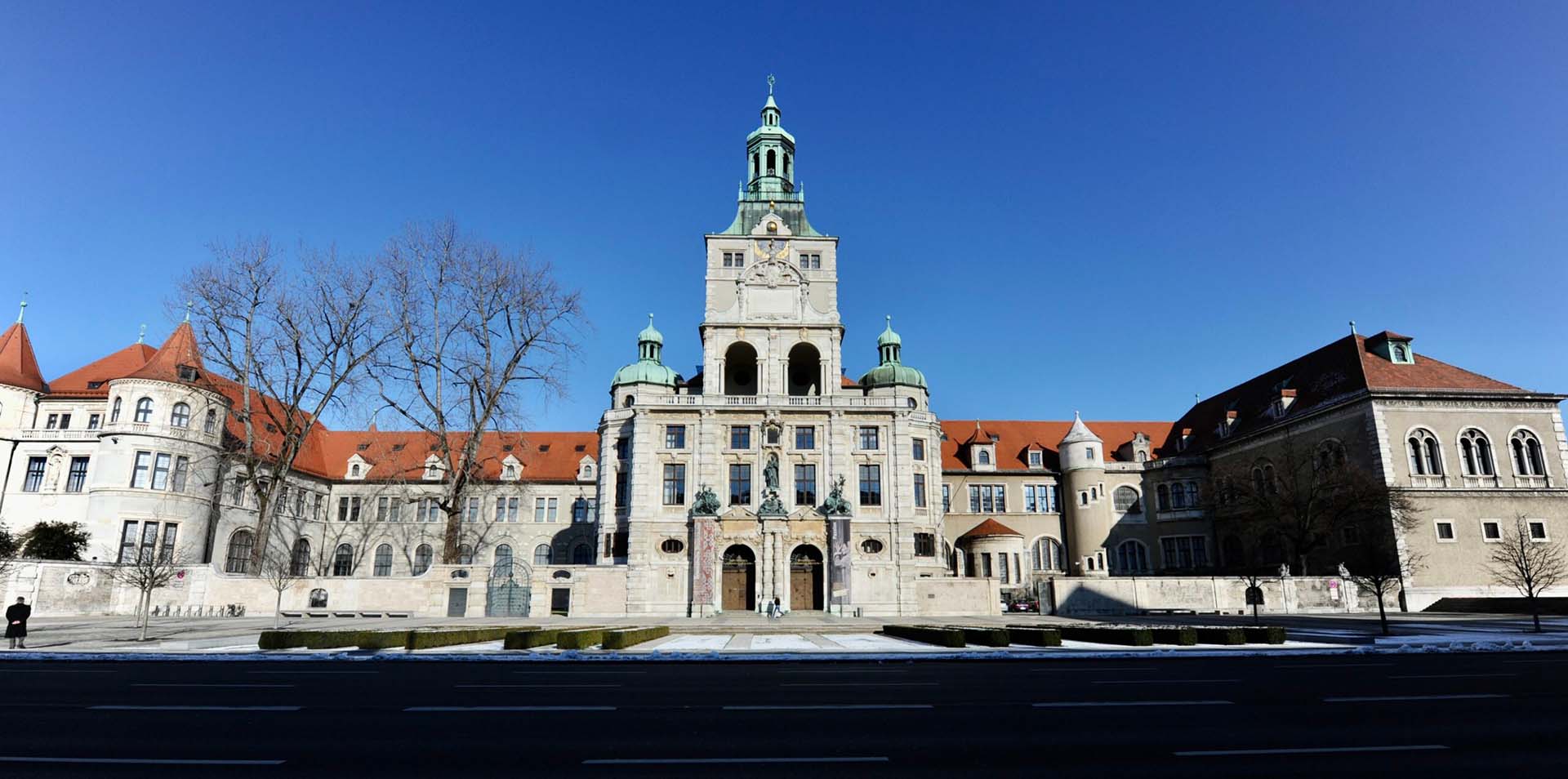
10 AM: Bayerisches Nationalmuseum / Bavarian National Museum
The Bavarian National Museumis located at the southern end of the English Garden. The museum is a true treasure trove: it is one of the largest museums in Germany and tells the story of European cultural history in Bavaria through outstanding objects, from late antiquity to Art Nouveau. The ceramics and porcelain collections are world-famous; they include both royal ceremonial vessels and everyday peasant objects. Particular highlights include early Meissen porcelain (with a dedicated branch museum in Lustheim Palace in Oberschleißheim, north of Munich) and figurines from the Nymphenburg porcelain manufactory in Munich (tour described on Day 2).

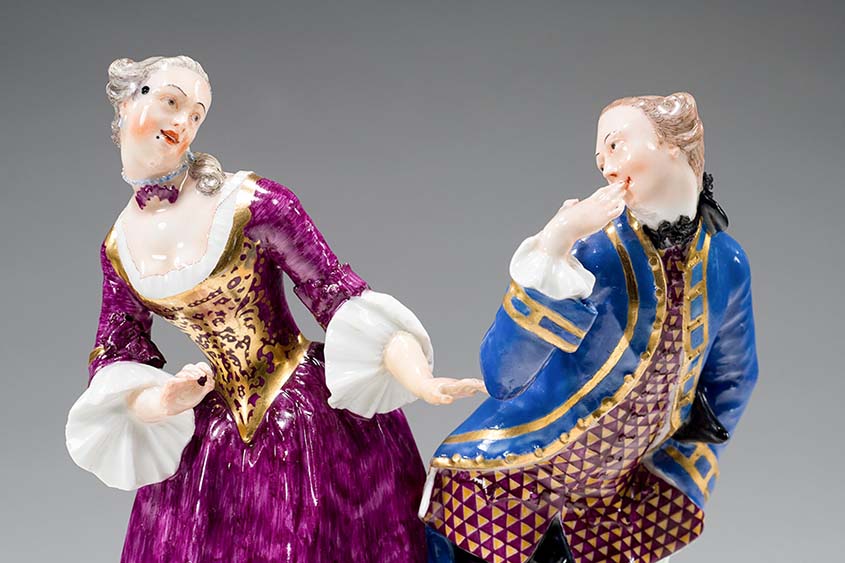
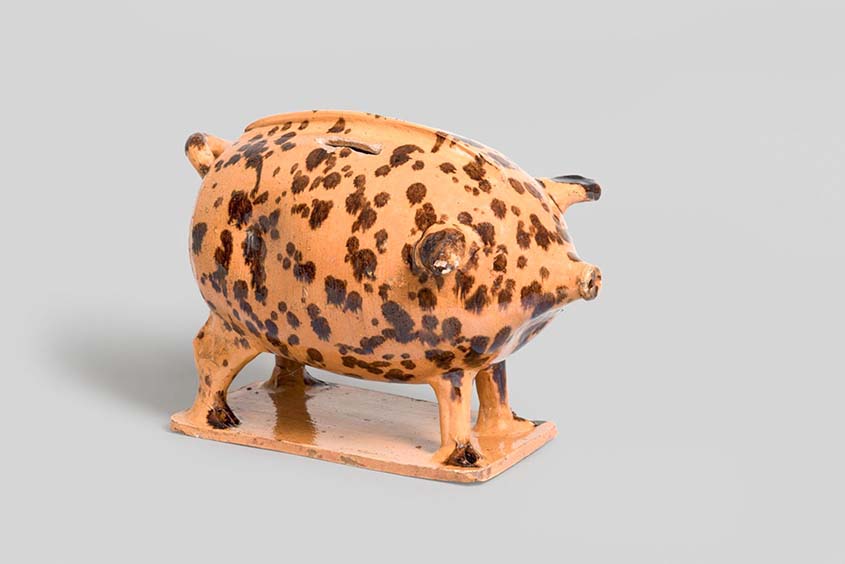
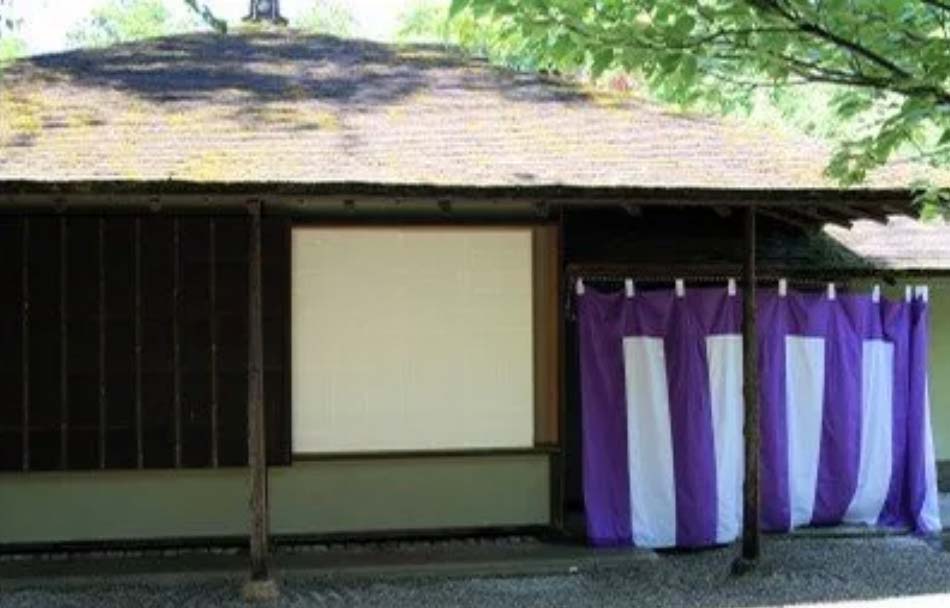
12 PM: Teehaus im Englischen Garten
After the museum visit, a short walk leads to the English Garden and the unique Urasenke Teahouse Kanshoan—an original Japanese teahouse in the middle of Munich! It was donated by the Urasenke Tea School in Kyoto on the occasion of the 1972 Olympic Games, and tea ceremonies are held here on weekends.
12:30 PM: Haus der Kunst

Time for a lunch break. The Goldene Bar in the Haus der Kunst offers not only snacks but also a wealth of art and history. The museumwas once known as the "Haus der Deutschen Kunst" (House of German Art) and was a prestige project of Adolf Hitler himself. It was one of the few large buildings in Munich that was spared during the bombing raids of the Second World War. After the war, American forces used the building as officers’ barracks—and even played basketball in the pillared hall. A small archive room on the first floor tells the story of the building and the role of National Socialism in Munich.

2 PM: Pinakothek der Moderne
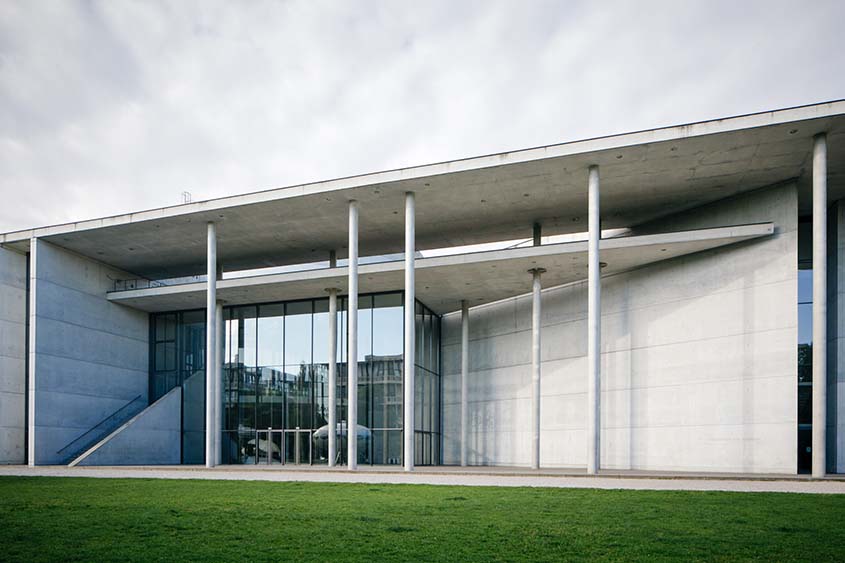
It’s only a short walk from the Haus der Kunst to the Pinakothek der Modernein Maxvorstadt, the city’s museum district. This modern building houses four museums, including Die Neue Sammlung – The Design Museum, which may be of particular interest to ceramic enthusiasts. The collection features works by renowned German ceramists Beate Kuhn and Johannes Nagel, as well as pieces from Africa and the Bauhaus period. However, not all works are always on display, so be sure to check the current special exhibitions. Outside, there is a large sculpture by Eduardo Chillida.

3:30 PM: Museum Brandhorst
Opposite the Pinakothek der Moderne is the Brandhorst Museum of Modern Art. Even if you don't have time to go inside, be sure to take a look at the building from the outside! The façade, designed by Berlin-based architects Sauerbruch Hutton, consists of 36,000 vertically mounted ceramic rods in 23 different colors, reflecting the tones of the surrounding environment. Of course, the museum itself is also worth a visit—the collection is excellent and includes works by the American artist Cy Twombly, such as his large-scale cycle Roses.
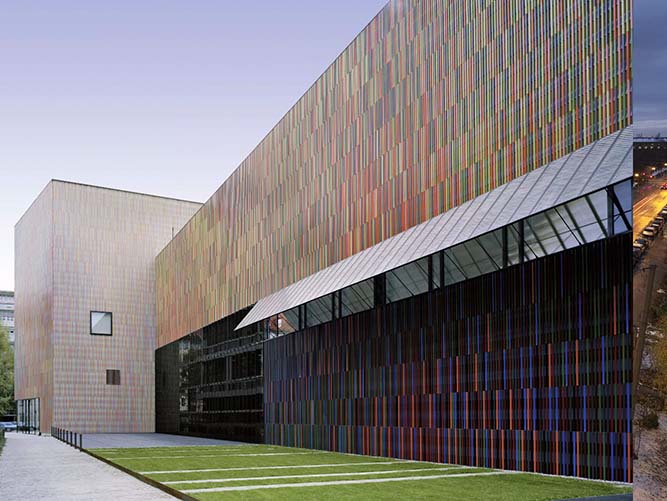

4 PM: Königsplatz
Time for a break: the restaurant Ella is located right next to the Lenbachhaus on Königsplatz and offers a fantastic view of the Propylaea—a replica of the entrance gate to the Acropolis, built during the reign of King Ludwig I. The name Ella refers to Gabriele Münter, the long-time partner of Wassily Kandinsky, who pioneered abstraction in Munich. Paintings by both artists can be seen in the neighboring Lenbachhaus. Ella is only open until 6 PM.
5 PM: State Collection of Classical Antiquities
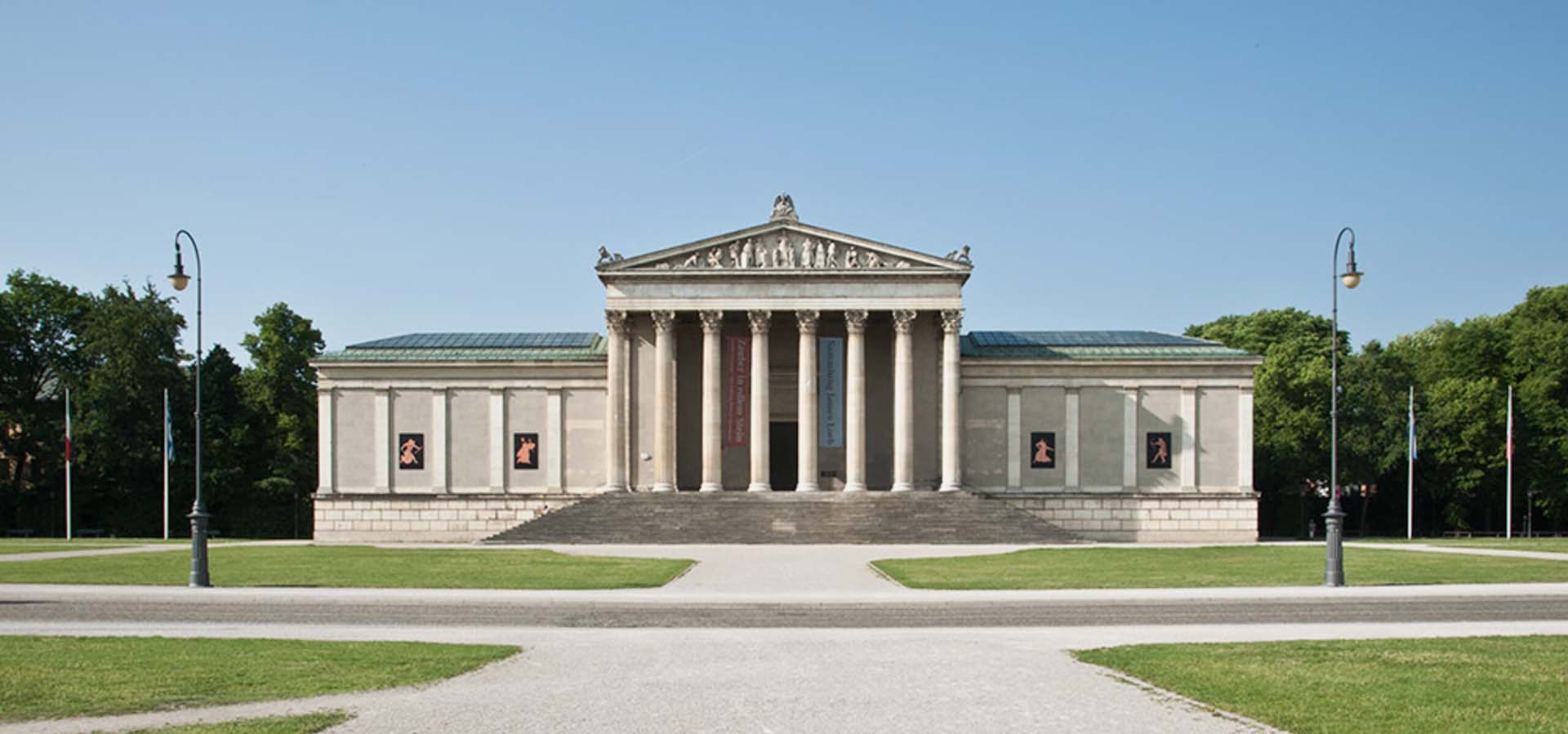
The State Collection of Classical Antiquitiesis located directly on Königsplatz. Highlights of the collection include the world-famous marble Medusa Rondanini, but there’s also much to discover for ceramics fans, such as the Dionysus Bowl, one of the most renowned works of ancient Greek pottery. The museum is open until 8 PM on Wednesdays, and until 6 PM on all other days.

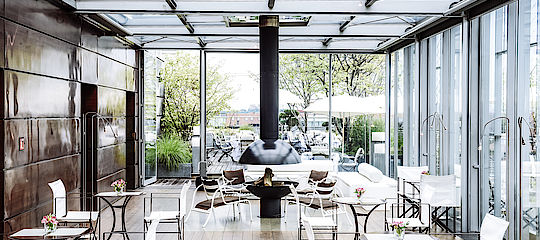
7 PM: Blue Spa Bar
For dinner, we recommend the Blue Spa Bar on the rooftop terrace of the Hotel Bayerischer Hof. From here, you’ll have a fantastic view of Munich’s Frauenkirche.
DAY 2 | Porcelain, Palaces, and Studios: A Day of Craft, Design, and Bavarian Elegance
10 AM: Porzellanmanufaktur Nymphenburg
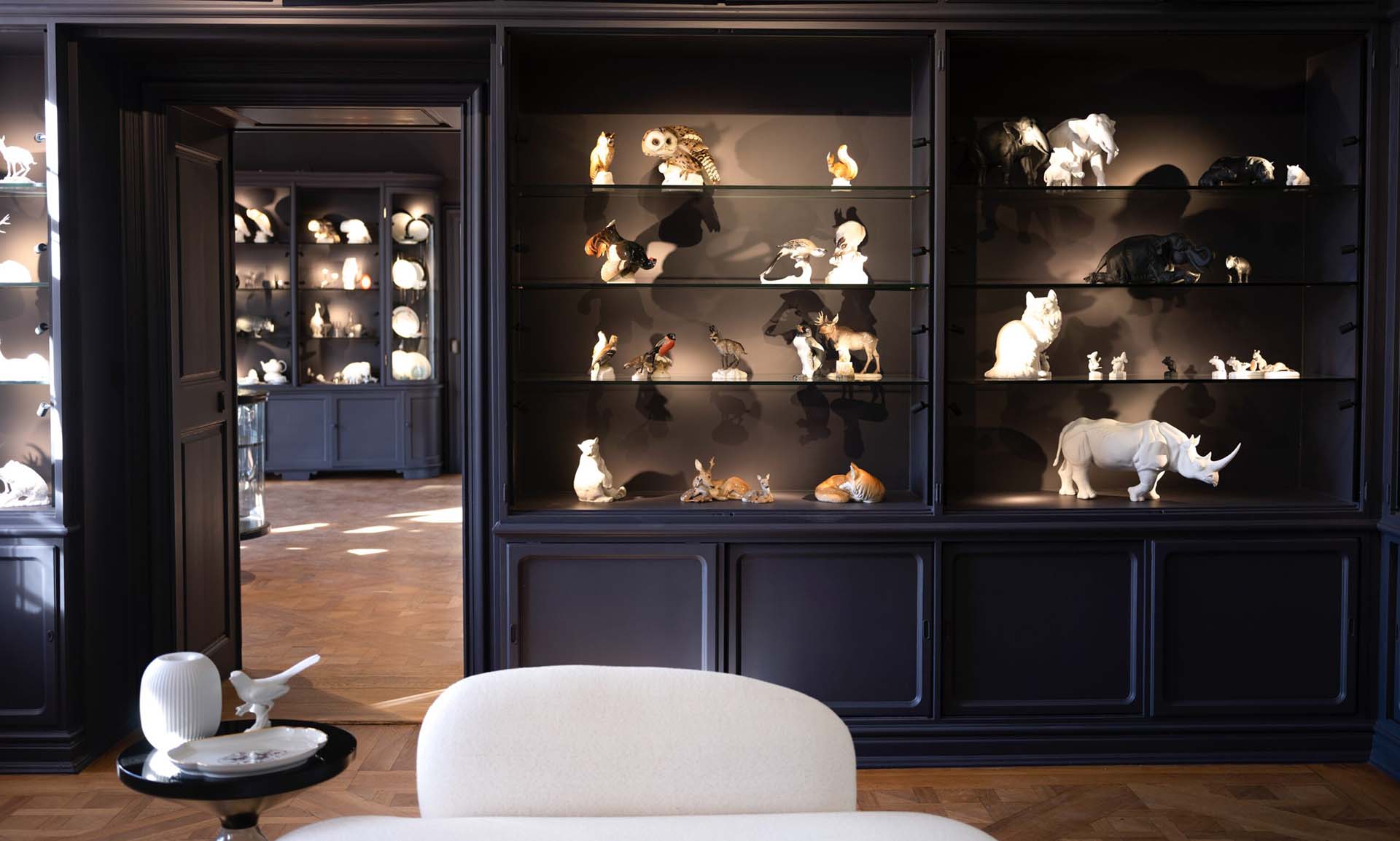
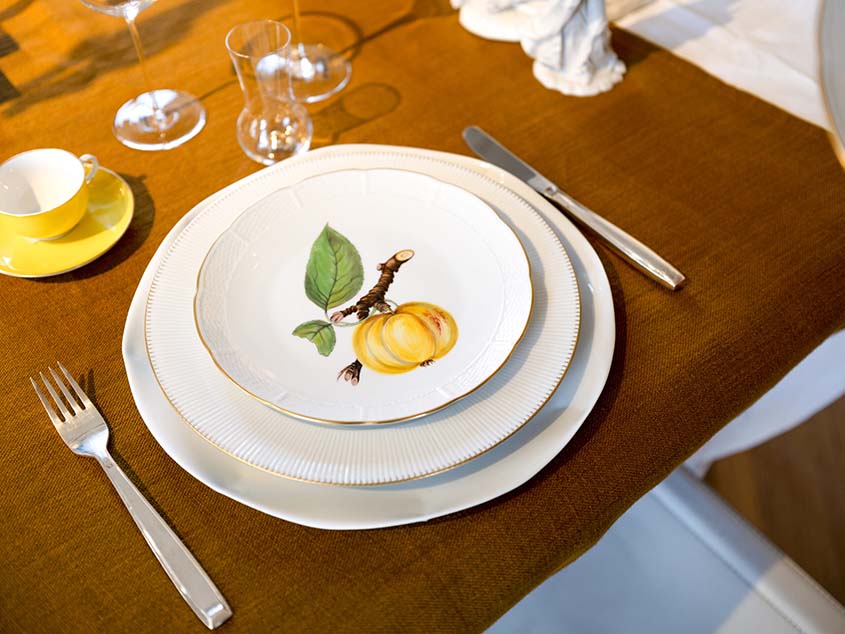
Porzellanmanufaktur Nymphenburgwas founded in 1747 and has been producing high-quality porcelain ever since. Production still takes place on-site today, right next to Nymphenburg Palace. A spacious showroom displays the full spectrum: tableware, sculptures, small figurines, and lamps. This traditional company regularly collaborates with contemporary artists and designers to develop new products—including Konstantin Grcic, Hella Jongerius, and Ruth Gervich. The production facilities are located behind the showroom. Mills, potter’s wheels, and even elevators are still powered by water from the Nymphenburg Palace stream.
11:30 AM: Schloss Nymphenburg
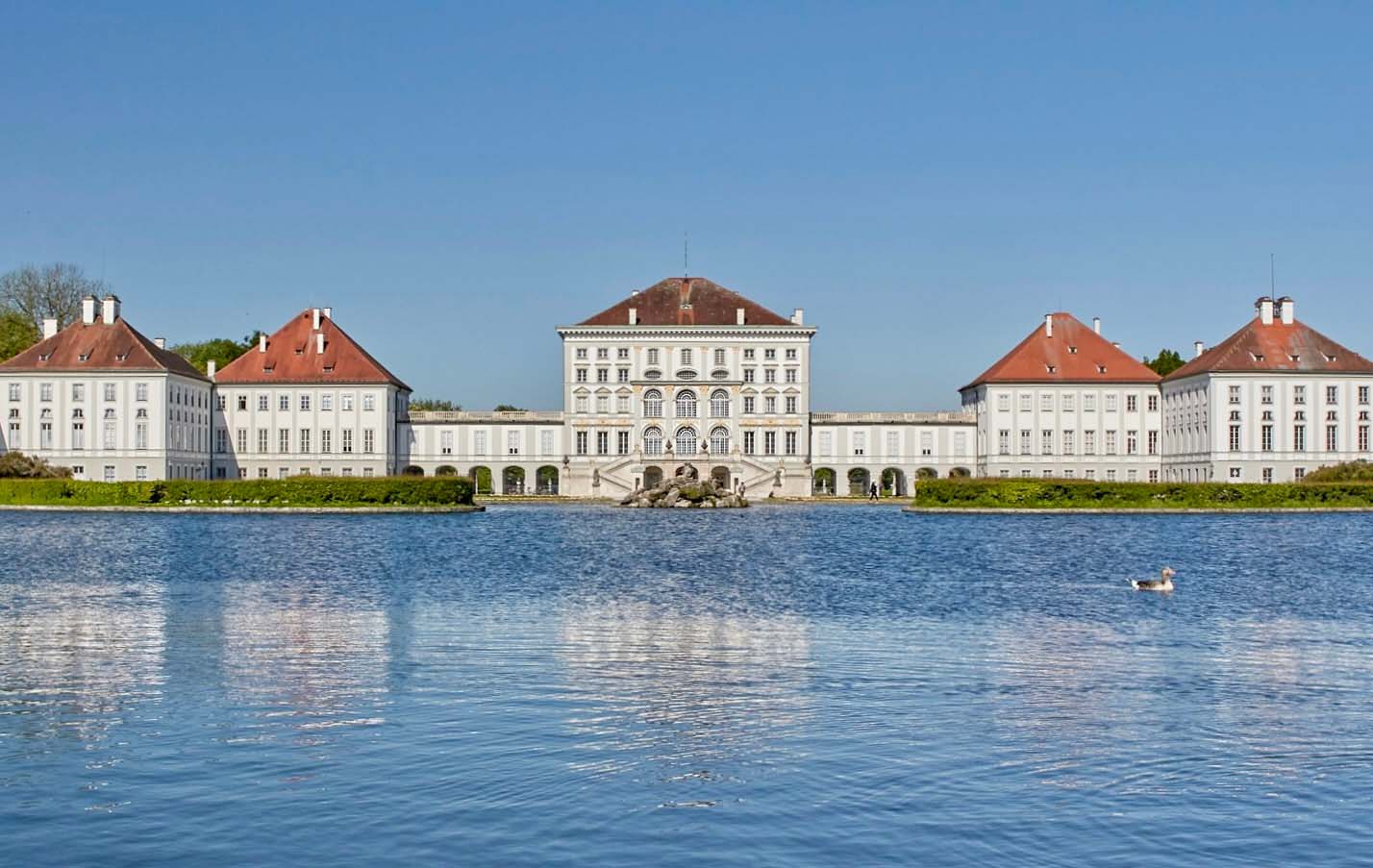
The palace itself is, of course, also a highlight: Nymphenburg Palace was the summer residence of the electors and kings of Bavaria for 200 years. It is one of the largest palaces in Germany and one of the most important in Europe. For lunch, we recommend a typical Bavarian meal at the traditional Schlosswirtschaft Schwaige, which might include the famous Schweinebraten—roast pork in dark beer sauce, served with bacon coleslaw and potato dumplings.
2 PM: Atelier Billa Reitzner
Now it’s time for a streetcar ride! Take tram lines 16 or 17 and transfer to line 25 to reach Munich-Giesing and the Atelier and Showroom of Billa Reitzner. Here,you’ll find handcrafted tableware made of cream-colored porcelain—freely twisted, delicately translucent, and based on her own designs, which are clear yet unmistakably unique. Functional and absolutely contemporary.
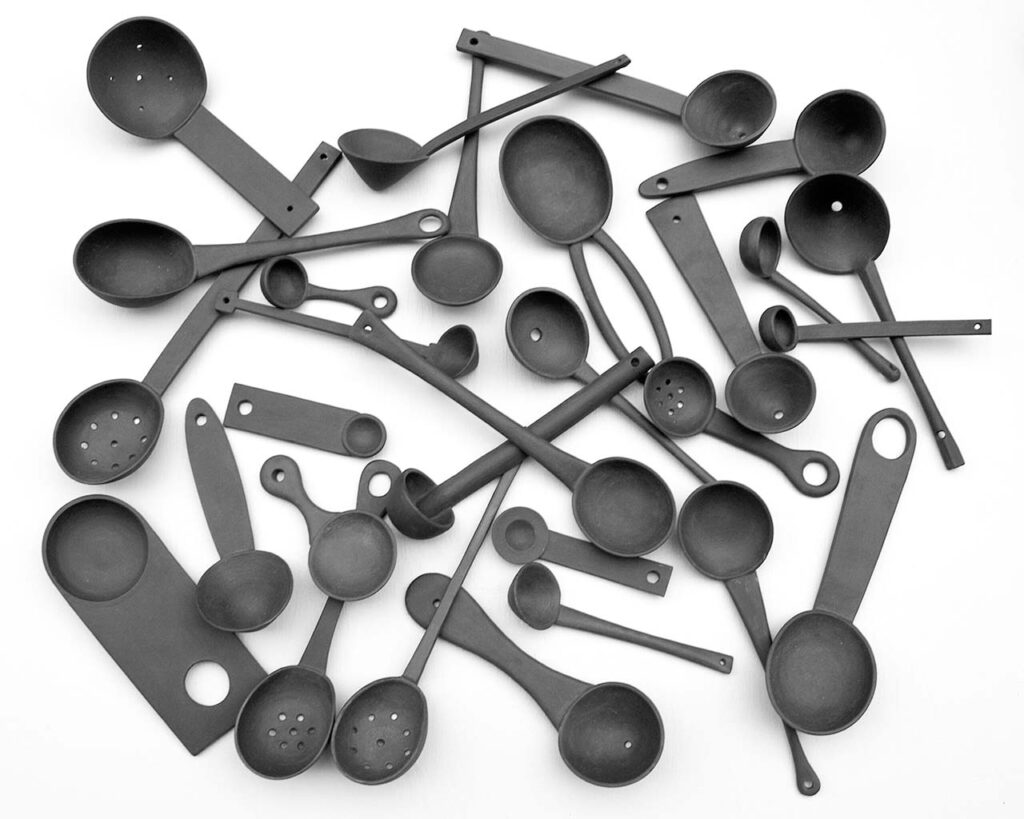
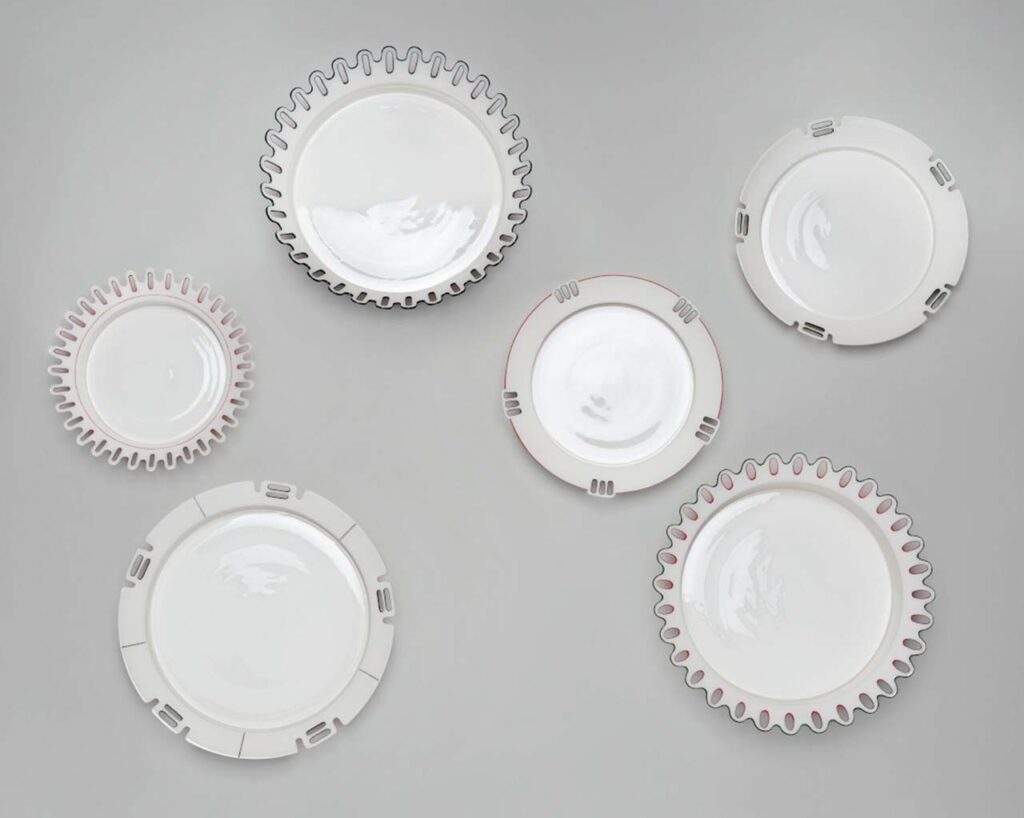
3:30 PM: Bayerischer Kunstgewerbeverein
Continue by tram back to the city center to visit the Bavarian Arts and Crafts Association.Textiles, ceramics, jewelry, glass, wood, paper, or toys—artists and craftspeople from a wide variety of trades have come together through this association. Founded in 1851, its mission from the outset has been to promote excellence in arts and crafts through exemplary craftsmanship. The Bavarian royal family once served as patrons, and at its peak, the association had 2,200 members—including the Russian Tsar and the German Emperor.
Even today, the BKV remains unique in Germany. With around 400 current members, it is the country’s largest and oldest regional association for artisans—and the only one that operates both its own store and a gallery, which hosts eight temporary exhibitions each year.

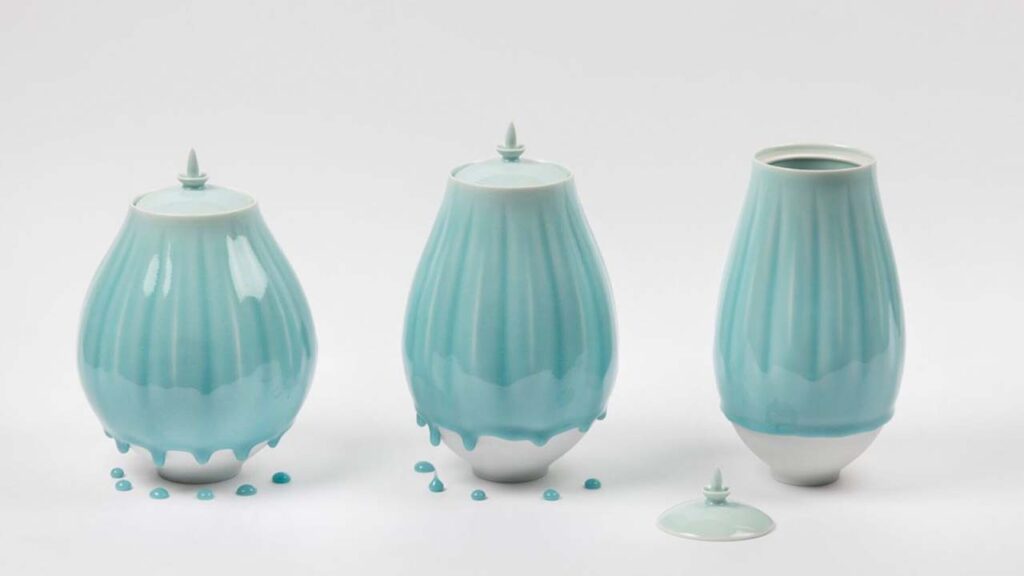
4:30 PM: Galerie Handwerk
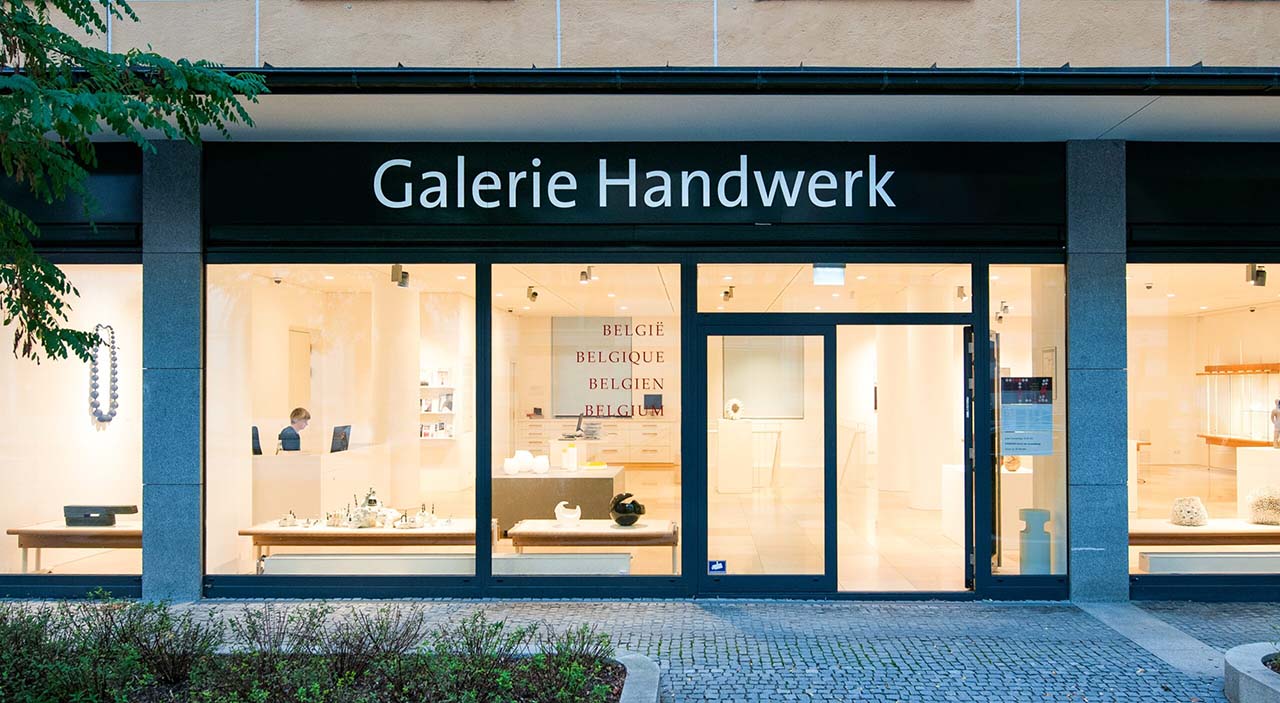
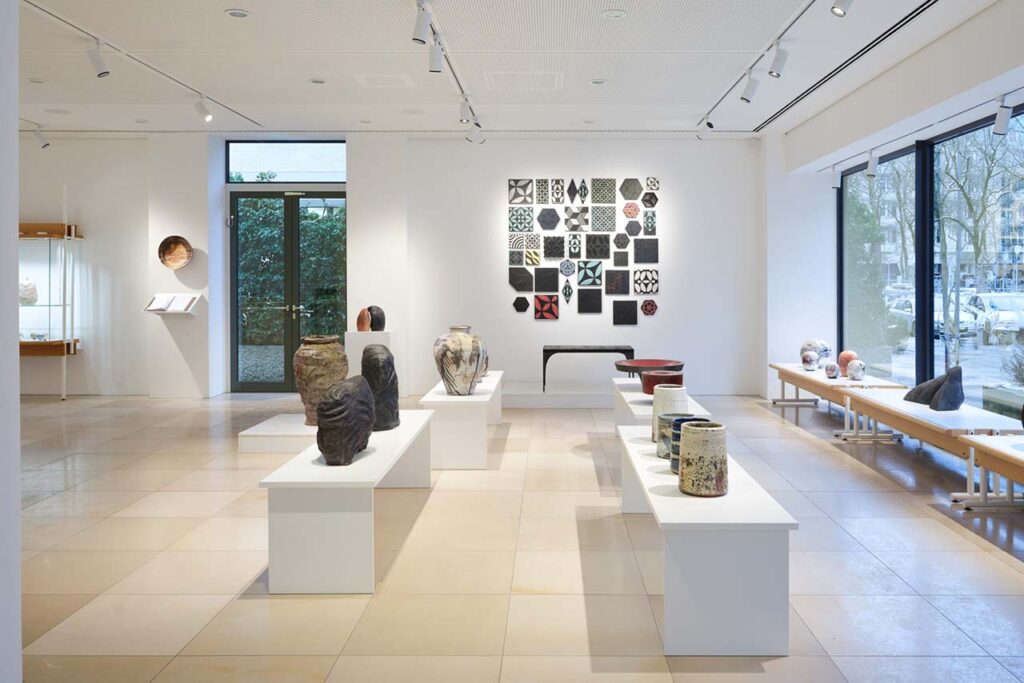
Not far away is one of the most important venues for contemporary arts, crafts, and ceramics in all of Germany: the Galerie Handwerkof the Chamber of Crafts for Munich and Upper Bavaria. Glass sculptures from the Czech Republic and paving stones, ceramic vases from Korea, embroidery from the hippest Parisian fashion ateliers, wrought-iron grilles, old tools, and jewelry made of plastic—the exhibition program at Galerie Handwerk is likely unique in the world. Across seven temporary exhibitions each year, the gallery presents masterpieces of creative craftsmanship from all trades, displayed over two floors.
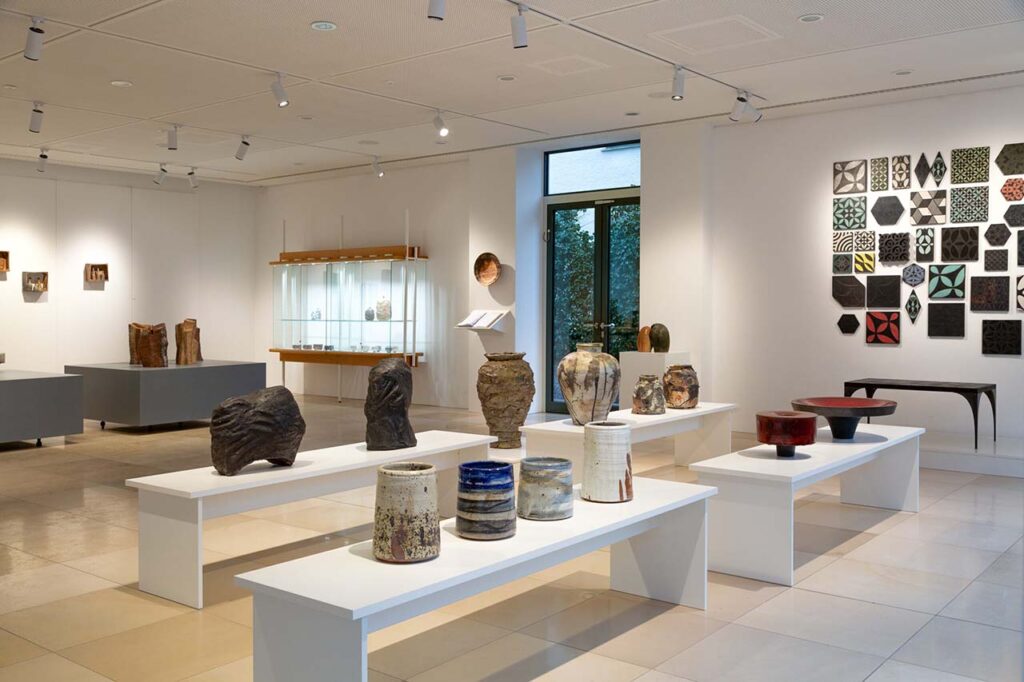
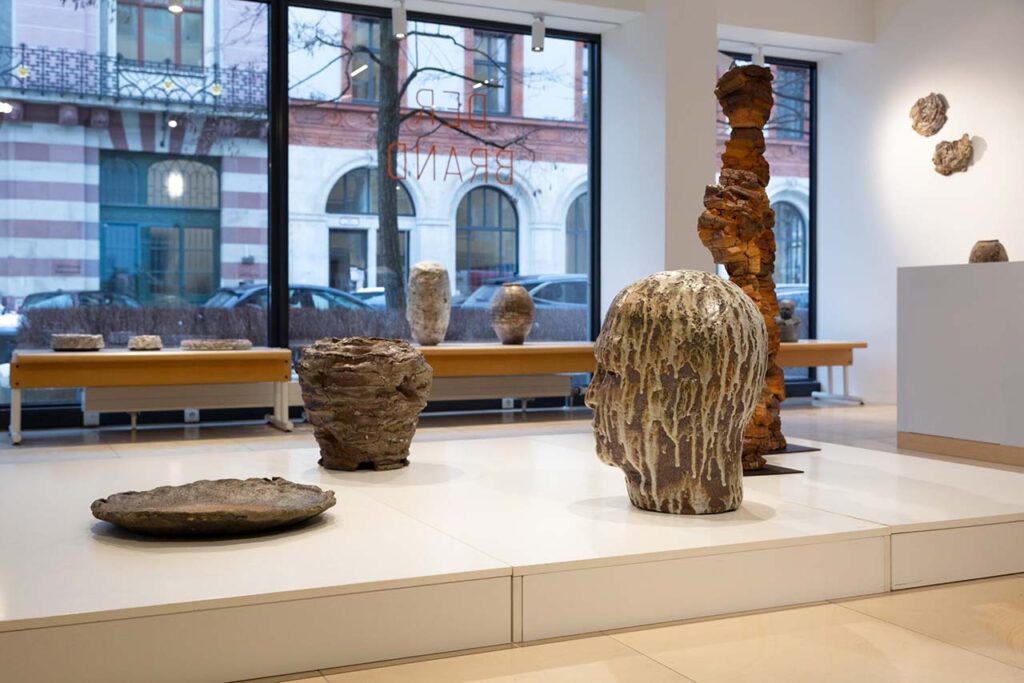
5:30 PM: Atelier Christiane Wilhelm
The Glockenbachquartier district is a vibrant artists’ quarter in the center of Munich. Many of its buildings date back to the Gründerzeit, the period of rapid expansion in 19th-century Germany. The neighborhood is filled with countless cafés, restaurants, and small galleries. This is where Christiane Wilhelm has her studio,where her distinctive vessel sculptures, jars and lidded vessels, bowls, vases, and teapots are created and displayed.
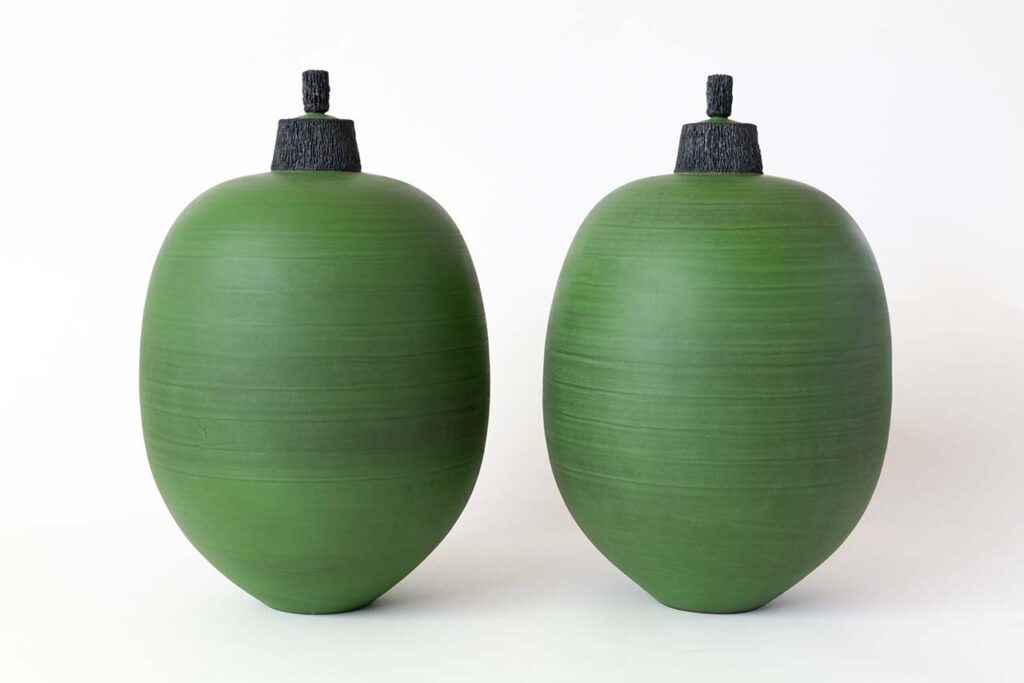
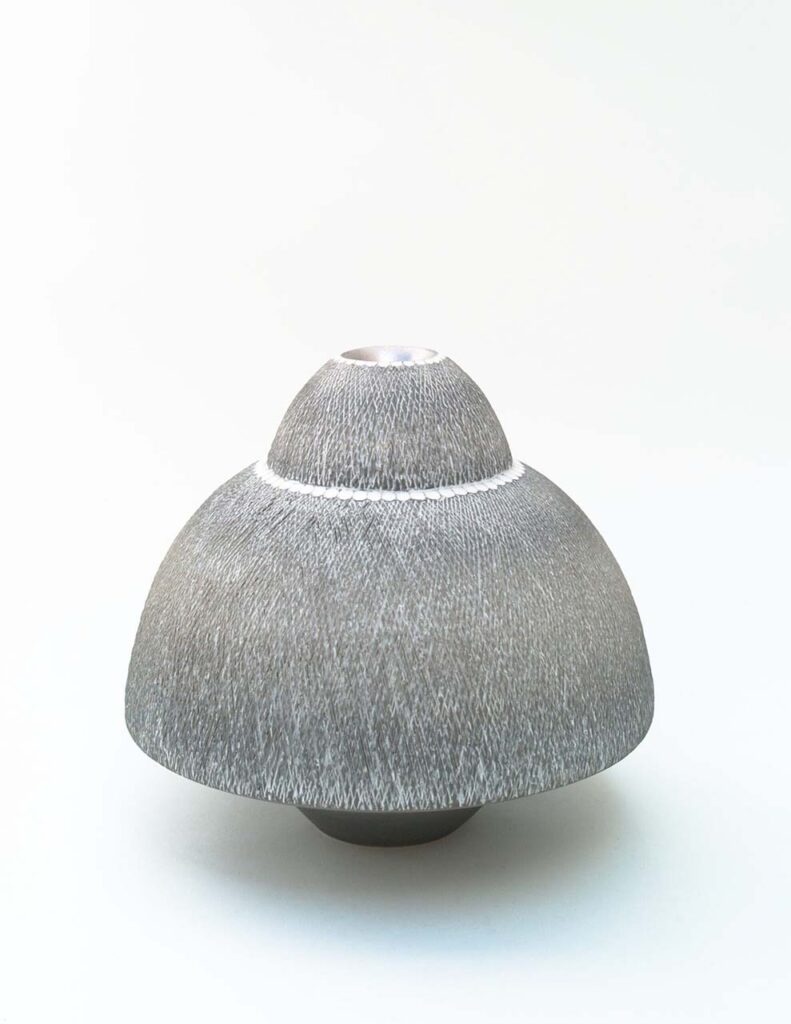
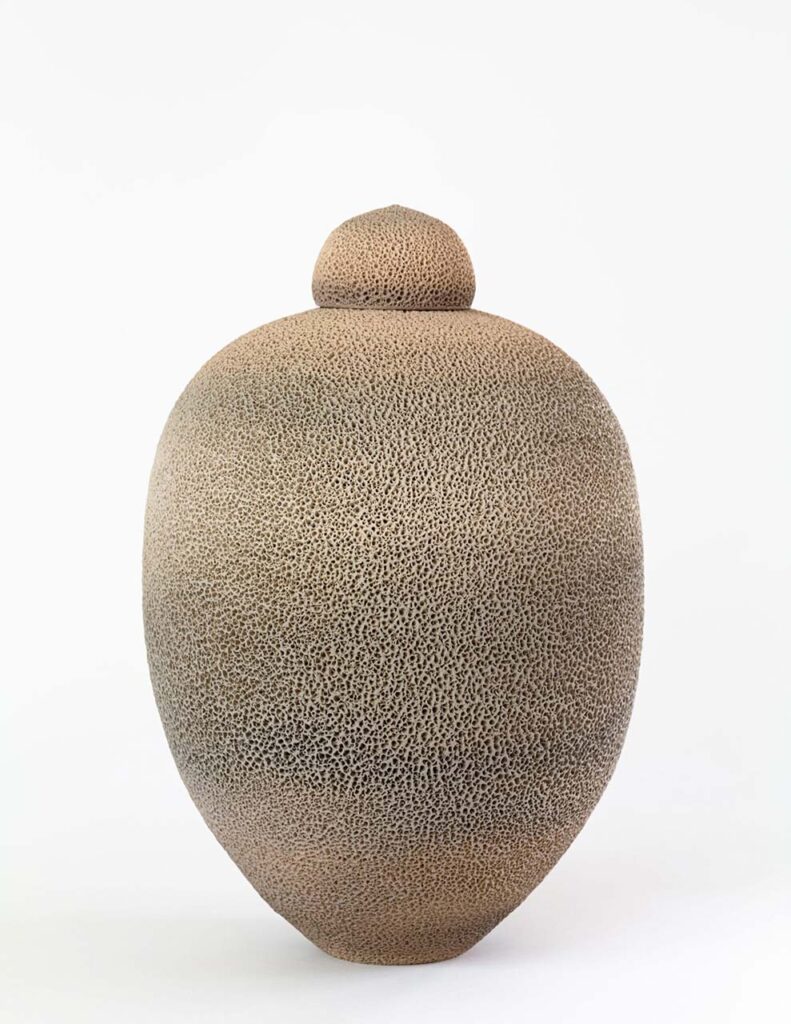
7 PM: Dinner
For dinner, we recommend the Ratskeller in the city center. They serve ox prepared in a variety of ways, and the bratwurst platters are also highly recommended if you’d like to sample different types of sausage. A perfect pairing: naturtrübes Kellerbier—an unfiltered beer with natural cloudiness and a fresh taste.
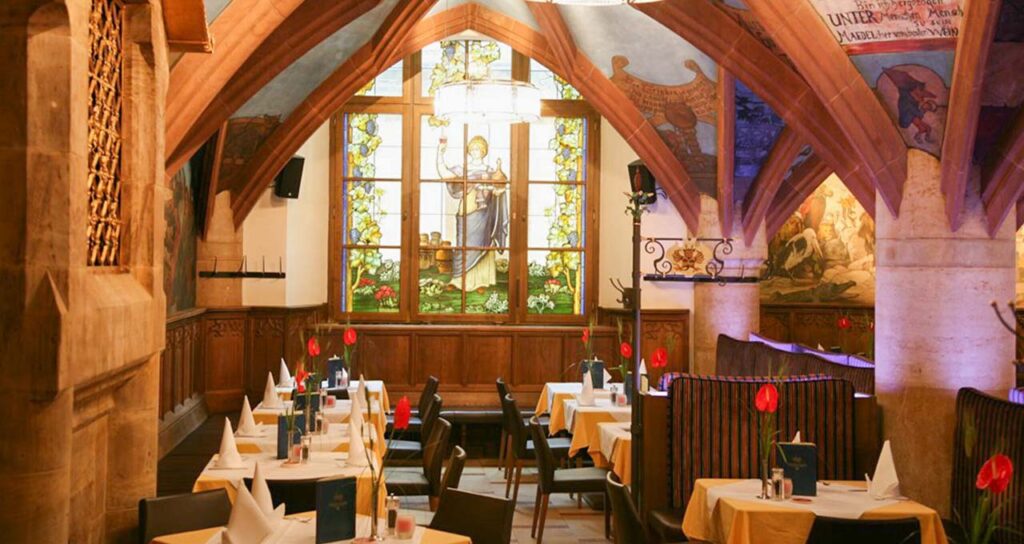
DAY 3 | Kilns, Castles, and Quiet Islands: A Day Trip to Lake Chiemsee
9:30 AM: Nikolaus Steindlmüller Studio and Anagama Kiln
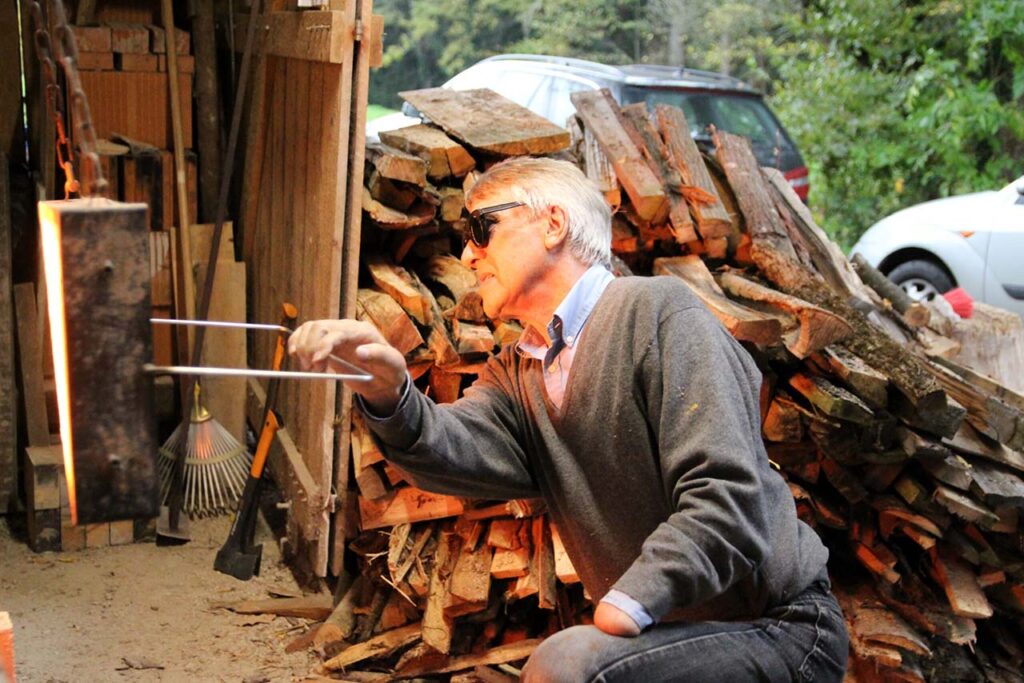
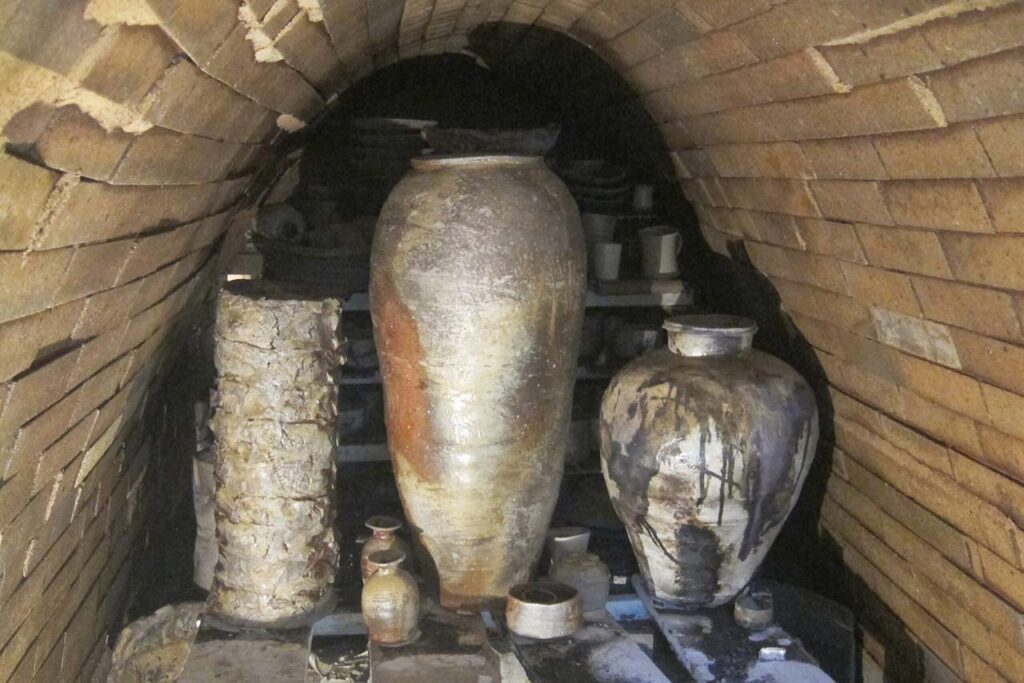
Take an excursion to Prien am Chiemsee by train to visit the atelierof Nikolaus Steindlmüller and his Anagama kiln, located in a beautiful and historic setting. Steindlmüller is fully devoted to the arts, with a primary focus on ceramics. In search of the essential, basic elements for his work, he chose to fire his pieces using wood—an archaic yet expressive method—through an Anagama kiln, a traditional Japanese technique now embraced internationally. He sources his clays and minerals from select ponds in Northern Bavaria, and he collaborates with an international team of friends from Germany, Switzerland, and Japan—some formally trained in ceramics—who also fire their work in this shared kiln.
His vessels, plates, tea bowls, and small sculptures are fired in his second self-built wood kiln, designed by himself in his hometown of Prien am Chiemsee. In many cases, the colors on the ceramics are created without glazes—exclusively through the firing process. Ash from the burning wood settles as a fine dust on the surface, and at temperatures above 1200 °C, it fuses with the clay to form a natural, glass-like coating. This results in a range of colors, including red and gray, blue-violet, or ochre tones.
Glazes—mostly of the shino type or general compositions—are also used to achieve further desired effects, producing surfaces in icy or bright milky white, rose, red, or carbon-trapped black, often enriched by ash deposits. His wood-fired ceramics are regularly exhibited at the Gallery of the Chamber of Crafts and the Bavarian Arts and Crafts Association, both located in Munich.

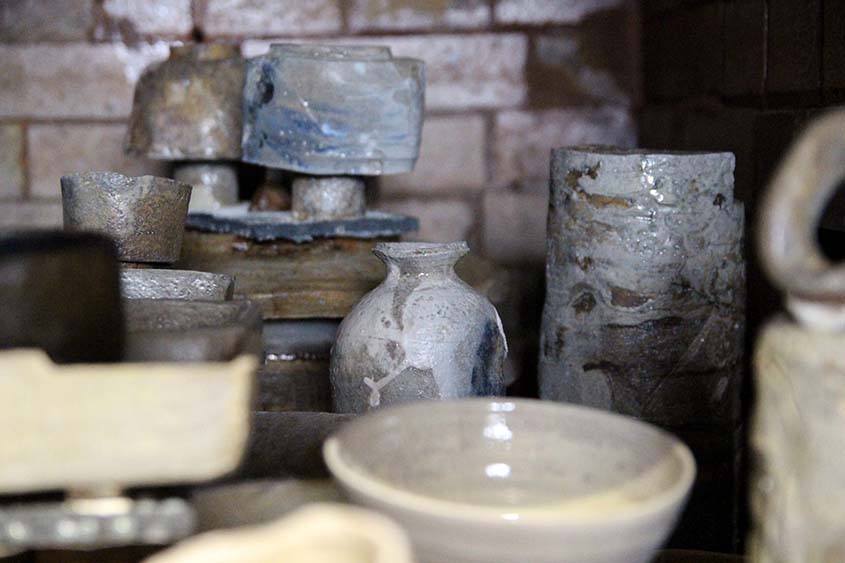
12 PM: Lunch

If you have a car, you can enjoy lunch at Restaurant Seiserhof, near Bernau, which offers a full view of Lake Chiemsee, its islands, and the Alpine panorama. Alternatively, Restaurant Wildenwart can be reached from the center of Prien in just 10 minutes. Directly opposite is Wildenwart Castle, a Baroque residence still inhabited by Herzof Max in Bavaria and his family—a great-grandson of King Ludwig III. We recommend the turkey schnitzel or trout fillet.
For a lakeside option, we also recommend Restaurant Westernacher, located right on the shore next to the port of Prien. It offers a beautiful view of Lake Chiemsee and its islands, set against a magnificent Alpine backdrop. Try a fish dish made with fresh catch from Lake Chiemsee!
2 PM: Schloss Herrenchiemsee

From the harbor in Prien, take a boat to Herreninsel, where Schloss Herrenchiemsee stands in the middle of a large castle park. Built in 1887 by King Ludwig II as a copy of the Palace of Versailles near Paris, it features a magnificent staircase, a state bedroom, and a 75-meter-long Hall of Mirrors. However, Ludwig only stayed in the castle for a few days; he died in 1886, the year it was completed.
4 PM: Fraueninsel
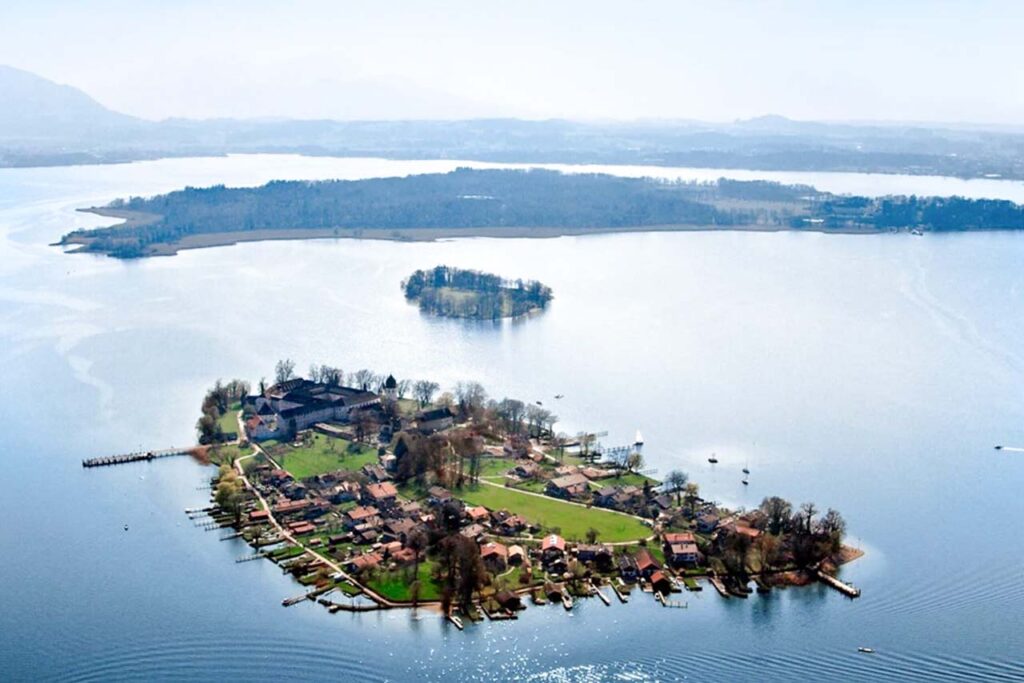
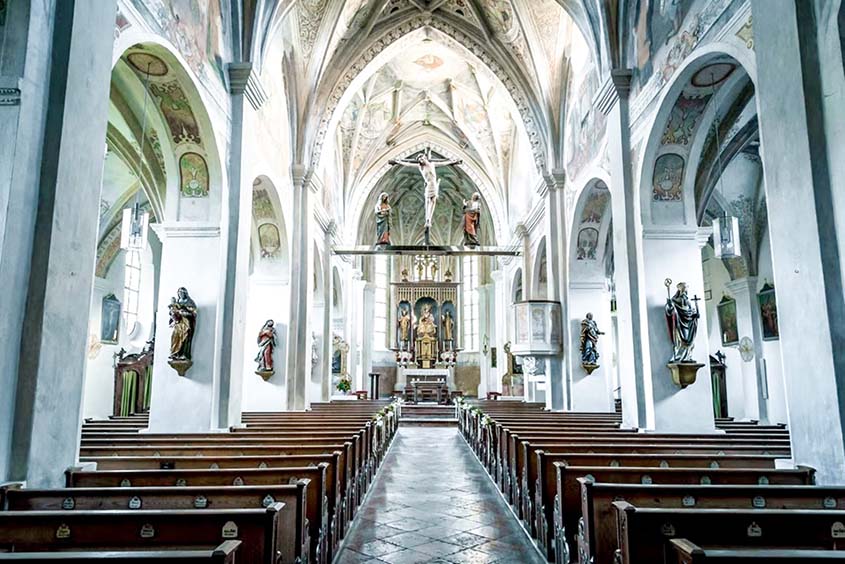
The Schlosscafé Herrenchiemsee invites you to take a relaxing coffee break. If you like, you can then continue to the smaller and very charming Fraueninsel. Like Herreninsel, Fraueninsel is a paradise for pedestrians: both islands are car-free, and cycling is not allowed. Just 200 residents live here in about 50 houses. At the heart of the island is Frauenwörth Monastery, with its striking bell tower. Founded in 782, it is one of the oldest monasteries in Bavaria and is still inhabited by Benedictine nuns. A beautiful 1.5-kilometer footpath circles the island, passing several artisan and ceramic studios along the way.

5:30 PM: Dinner

For an early dinner, there are two restaurants on the island: Restaurant Linde and Klosterwirt. Naturally, both serve fresh fish from Lake Chiemsee—whitefish is the local favorite—as well as other Bavarian specialties. Have you tried Weißbier (wheat beer) yet? It’s a top-fermented beer with lots of carbonation and a refreshing taste. To end your meal, be sure to try a Klostergeist (“monastery spirit”)—a herbal brandy made from an ancient recipe passed down by the island’s Benedictine nuns.
We take the boat back to Prien, followed by a train ride returning to Munich.
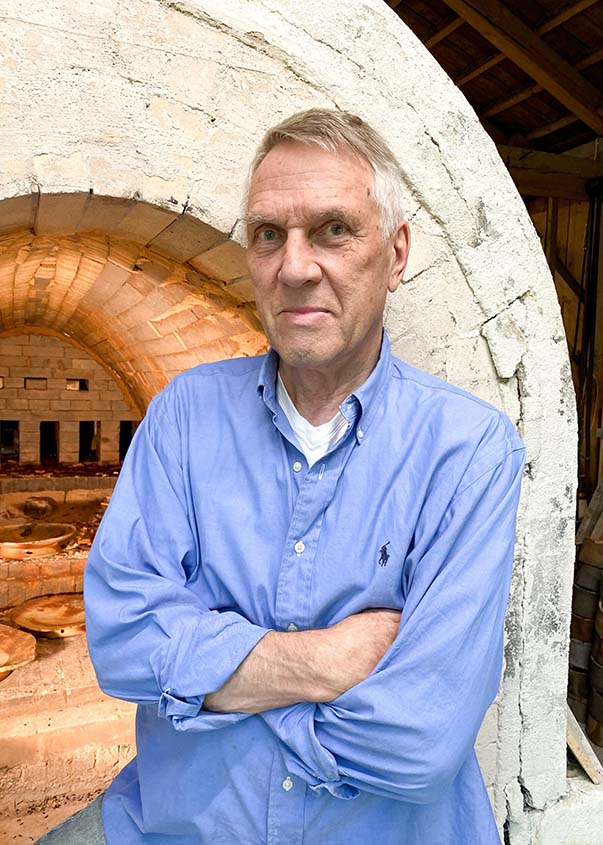
Nikolaus Steindlmüller (b. 1946) studied law, art history, and ceramics in Munich, Germany. In addition to his artistic practice, he continues to work as a lawyer. Numerous study trips have taken him across Europe as well as to Iran, Afghanistan, China, Korea, Japan, and the United States. During the 1990s, he served as chairman of the Art Association in Wasserburg and curated exhibitions featuring international artists such as Tony Cragg and Magdalena Jetelová. Over the years, he has also produced large ceramic plates in majolica technique, designed for well-known painters to paint on—an ongoing collaborative effort. He is a member of the International Academy of Ceramics and the Bavarian Arts and Crafts Association . His work has been featured in Neue Keramik and, in 2023, in Terrart by ACC, Barcelona.
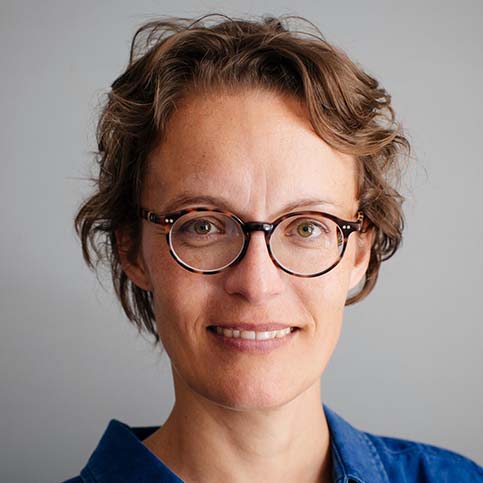
Julie Metzdorf (b. 1979) studied art history and literature in Regensburg (Germany) and Seville (Spain). As a cultural journalist, she primarily works for Bayerischer Rundfunk (Bavarian Broadcasting) and for print magazines such as Art Aurea. Her focus lies in the fields of art, applied art, and craft. She lives in Munich.
Want to see our next ceramic guide to a city? Longquan City, China and Brooklyn, New York are coming next! You too can feature ceramic destinations in your city. To share a guide, event, exhibition news, or research, visit our CONNECT PAGEfor more information!
Don't forget to subscribeto our newsletter for updates on all things ceramics!